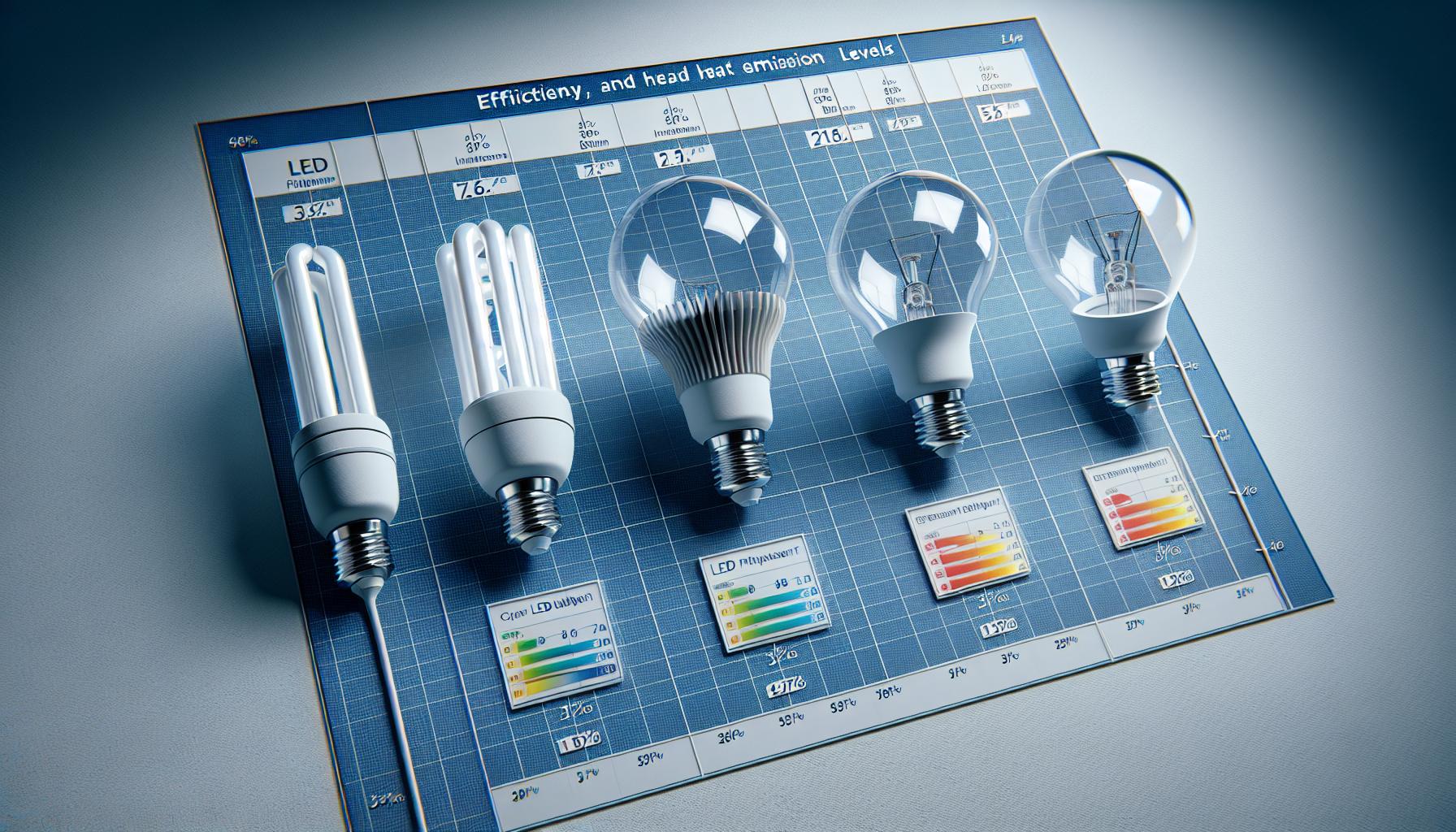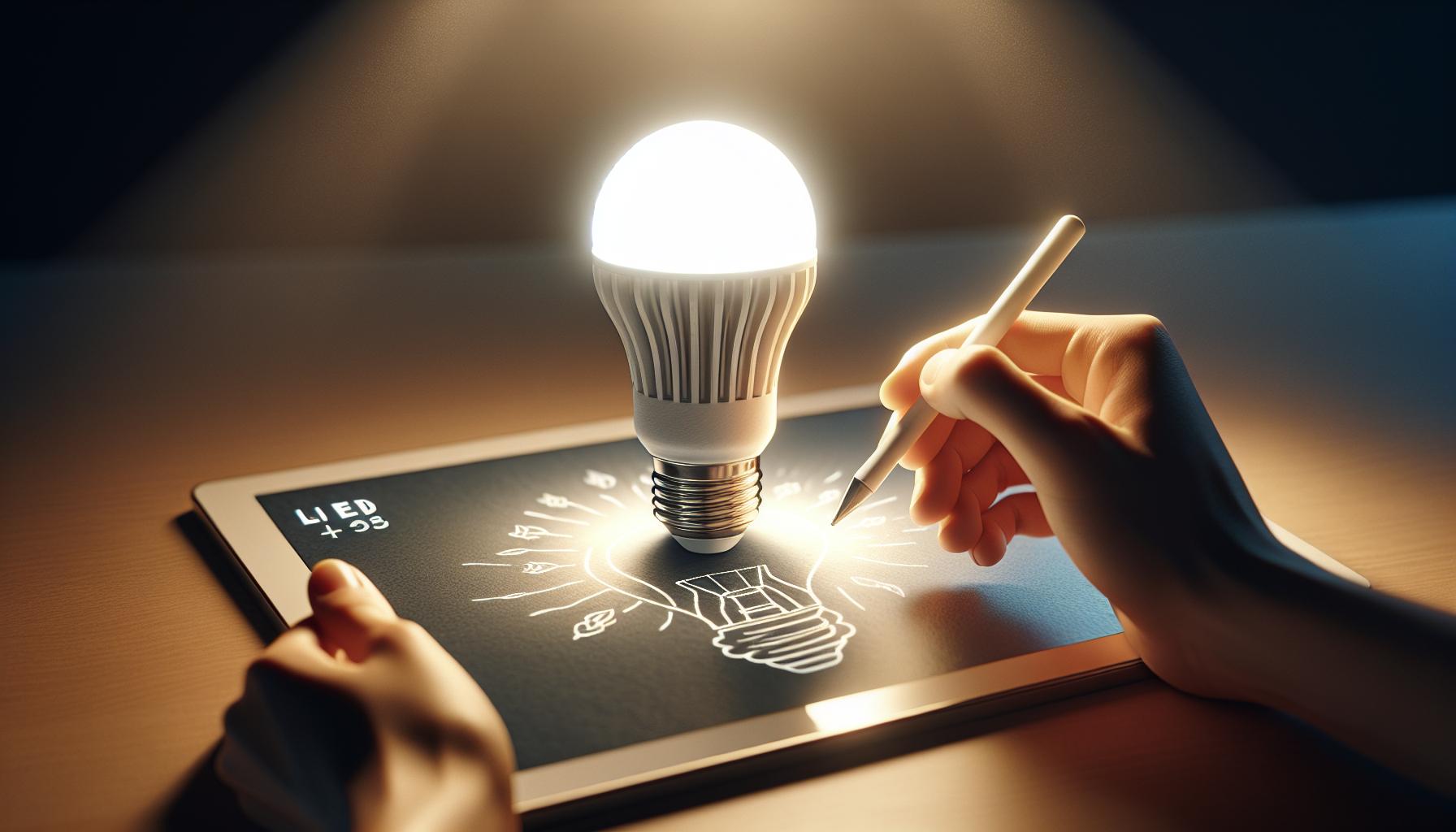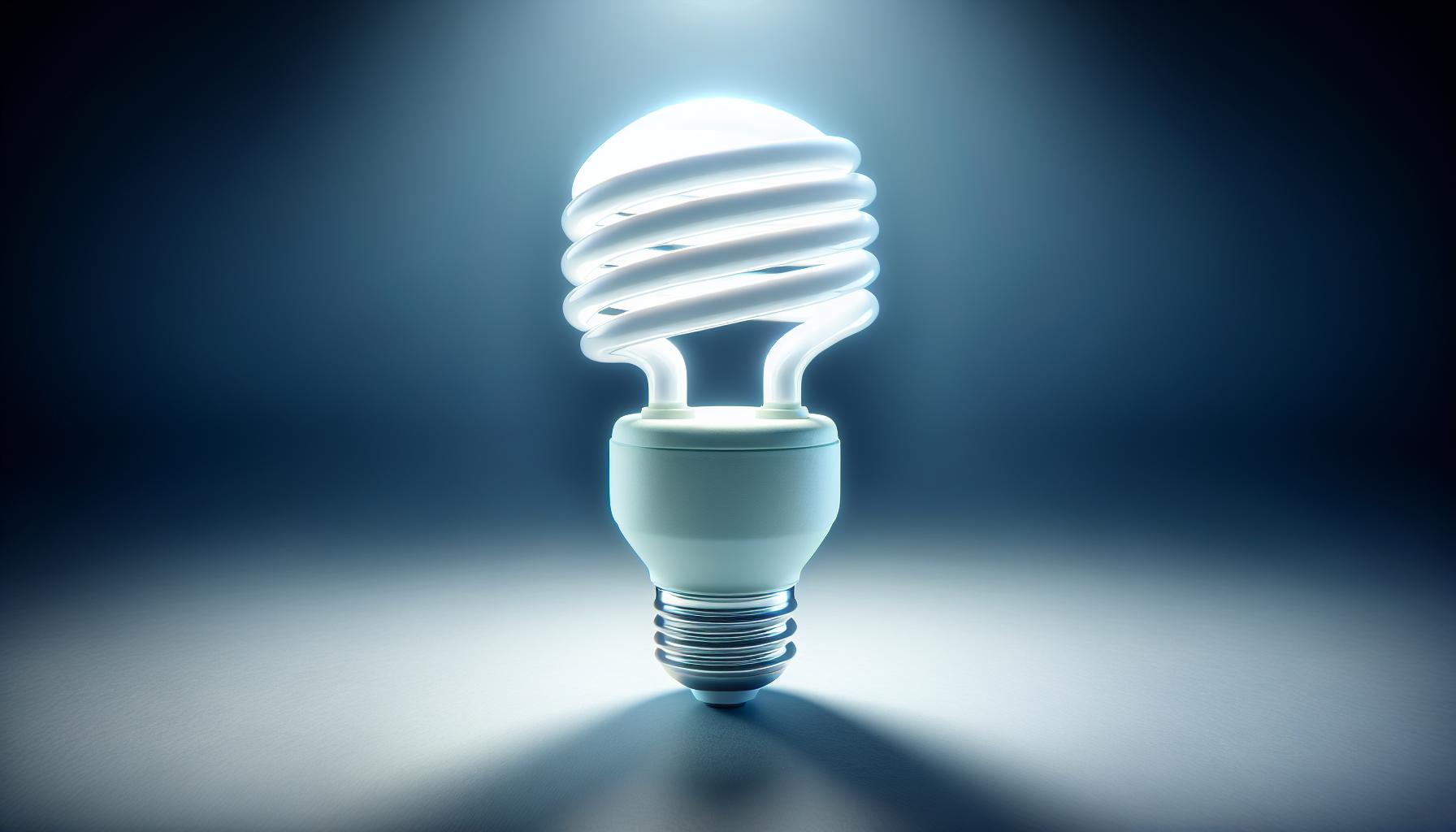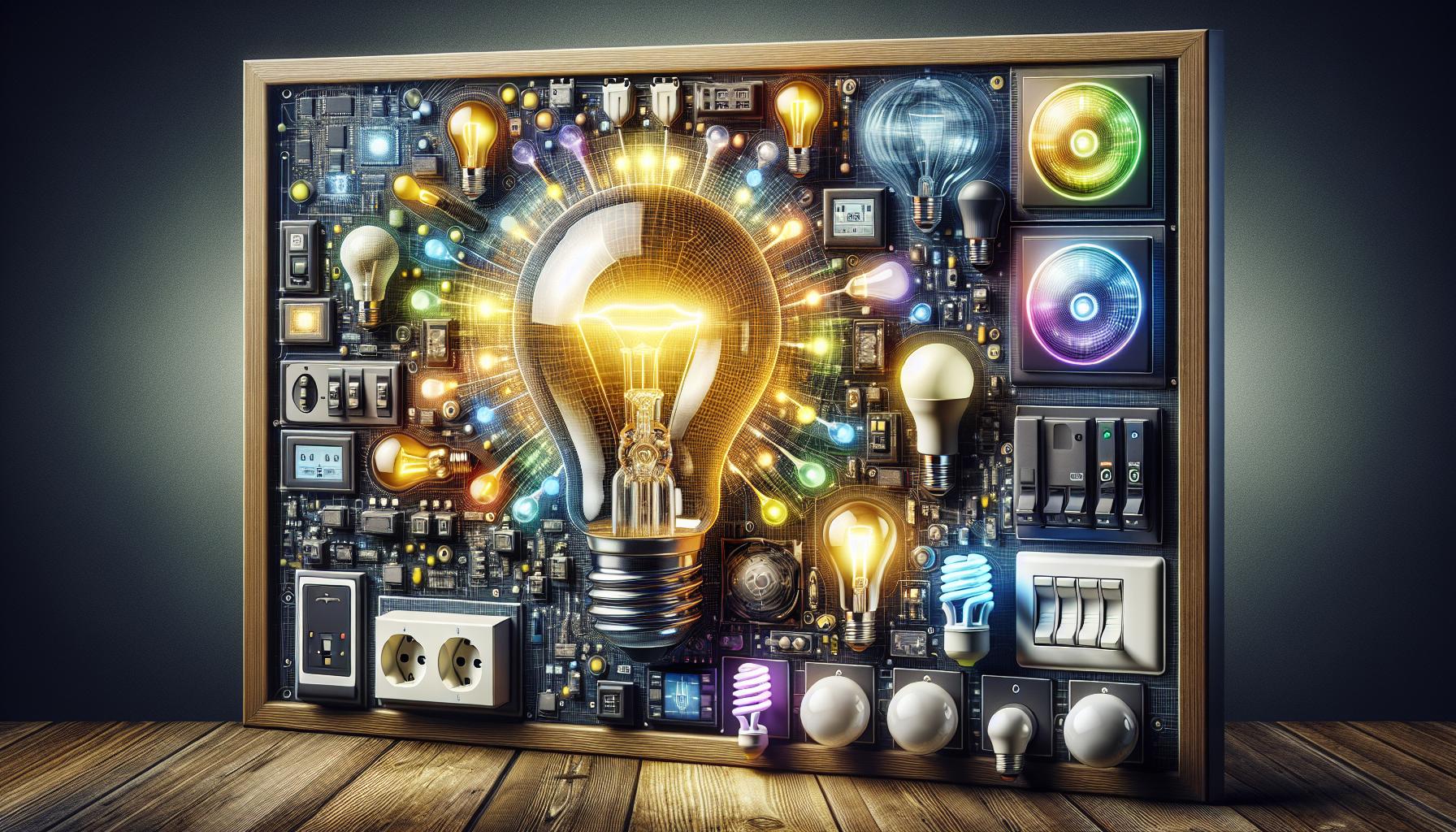Ever wondered why some rooms feel warmer when the lights are on? It’s all about the bulbs you’re using. Traditional incandescent bulbs aren’t just tough on your energy bill; they also turn your space into a mini-sauna.

But don’t sweat it! There’s a whole world of cooler options out there. From LEDs to fluorescents, you’ve got choices that can brighten your home without the extra heat. Let’s shine a light on the bulbs that keep their cool, so your summer days stay chill.
The Problem with Traditional Incandescent Bulbs
You know those old-school light bulbs that give off a cozy glow? Those are traditional incandescent bulbs, and while they’re great at creating ambiance, they’ve got a less-than-ideal trait: heat output. Incandescent bulbs convert only about 10% of their energy into light; the rest is turned into heat. In the summer months, that extra warmth is the last thing you need.
Picture this: You’ve got a room with several of these bulbs, and you’re trying to keep things cool. Instead, you’re facing an uphill battle against a persistent, invisible heater. Plus, if you’re the hands-on type who loves a good DIY project, working in a well-lit but sweltering room isn’t exactly comfortable.
Let’s crunch some numbers:
| Bulb Type | Energy Used for Light | Energy Wasted as Heat |
|---|---|---|
| Incandescent | 10% | 90% |
| LED | ~90% | ~10% |
| Compact Fluorescent | ~80-90% | ~10-20% |
When you’re decking out your workspace or sprucing up your home’s lighting, it’s clear that incandescent bulbs aren’t your best buddies. They’re the kind of pals that mean well but make you sweat—literally.
Moreover, incandescent bulbs have a shorter lifespan. You might find yourself replacing them frequently, which isn’t just a hassle—it adds up financially. For the cost-conscious and environmentally-minded, the continuous cycle of buy-replace-repeat can be particularly grating.
Don’t get the impression that you’ve got to fumble around in dim rooms to avoid the heat. There’s a spectrum of options that prioritize both illumination and coolness. Embracing these alternatives can lead to a noticeably cooler room, leaving you comfortable and your wallet a bit fuller from energy savings.
The Science Behind Heat Emission in Light Bulbs

Ever wonder why some light bulbs turn your room into a sauna? It’s all about how they convert energy. Traditional incandescent bulbs operate by passing electricity through a filament, heating it until it glows. Sadly, 90% of the energy they use is emitted as heat, not light.
Imagine LED and compact fluorescent bulbs as your room’s chill friends. They use a more efficient process to create light that doesn’t result in a heat party. LEDs, for instance, produce light through electroluminescence. Electricity passes through a semiconductor, generating light with minimal heat—up to 80% more efficient than incandescent bulbs.
Compact fluorescent bulbs have their own cool trick. They contain a gas that produces ultraviolet light when excited by electricity. This UV light then interacts with a fluorescent coating inside the bulb to produce visible light. Their process cuts down the heat factor significantly.
| Bulb Type | Efficiency Gain | Heat Reduction |
|---|---|---|
| LED | Up to 80% | Significant |
| Fluorescent | Up to 70% | Moderate |
| Incandescent | None | None |
Let’s not forget halogen bulbs, though overshadowed by LEDs and fluorescents. They’re improved versions of incandescents, efficiently using a halogen gas to recycle heat and extend the bulb’s life. But they still run hotter than LEDs and fluorescents, making them better for focused, high-temperature applications.
Beyond the science, the choice you make impacts your comfort and your wallet. Swapping out those heat-radiant incandescents for cooler, energy-conserving bulbs might just be the best DIY upgrade for your home. Remember, the right choice keeps you cool, cuts costs, and can even reduce that carbon footprint. Isn’t it time your lighting worked smarter, not harder?
LED Bulbs: The Coolest Choice

« How Often Do You Change Light Bulbs? Extend Their Life Now
What Light Bulbs Give Off the Least Heat? Discover the Coolest Choices »
When you’re tackling your next home DIY project or looking to revamp your lighting, you might want to pay close attention to LED bulbs. These marvels of modern lighting technology stand out as the premier choice when it comes to minimizing heat emission. LEDs, or Light Emitting Diodes, are not just cool to the touch; they’re cool for your energy bill too.
LED bulbs work differently from the traditional incandescent bulbs you may be familiar with. Instead of heating a filament to create light, LEDs produce light through semiconductors that convert electricity directly into photons – the basic unit of light. This process, known as electroluminescence, is what makes LED lighting significantly cooler.
Here’s an interesting fact: LEDs convert approximately 70% of their energy into light. This is a stark contrast to incandescent bulbs, which seem to spend more energy heating the room than lighting it up. With less heat production, LEDs reduce the strain on your air conditioning during those hot summer months, helping to keep your space comfortable without the extra cost and energy consumption.
- Advantages of LED bulbs:
- Lower energy consumption
- Reduced heat output
- Longer lifespan
- Better for the environment
Not only do you get to enjoy the immediate benefits of a cooler room, but you also take part in a larger movement towards energy efficiency and environmental responsibility. Adopting LEDs is a simple yet impactful way to lessen your carbon footprint.
Remember, while initial costs for LEDs may be higher than other bulbs, their long-term savings are undeniable. They last up to 25 times longer than traditional bulbs, which means fewer replacements and less waste for our landfills.
Whether you’re brightening up a cozy corner for reading or outfitting an entire home with energy-smart lighting, LEDs are the way to go. They’ve become a staple in energy-efficient homes and are swiftly outshining their incandescent and fluorescent counterparts. So next time you’re perusing the lighting aisle, consider how LED bulbs can not only illuminate your space but also bring a multitude of benefits to your home, wallet, and the planet.
Fluorescent Bulbs: A Cooler Alternative

If you’re passionate about DIY home projects, you’ve likely considered fluorescent bulbs as part of your lighting solutions. Fluorescent lights are known for their cool operation, making them a suitable option for spaces where you want to minimize heat output. They work through a chemical reaction within a gas-filled tube that emits ultraviolet light, which in turn causes the fluorescent coating inside the tube to glow.
Comparing fluorescent to traditional incandescent bulbs, you’ll find they emit significantly less heat. They’re not just cooler to the touch but also help in reducing ambient heat in a room. This aspect makes them an appealing choice, especially during those warm summer months when you’re trying to keep your space comfortable without overtaxing your air conditioning.
Fluorescent bulbs also boast a longer lifespan than incandescent bulbs, which translates to fewer replacements and less hassle for you, the avid DIYer. They strike a balance between cost and energy efficiency, being more affordable up-front than LEDs while still offering better energy consumption rates than incandescents. Here’s a snapshot of how fluorescent and incandescent bulbs compare:
| Bulb Type | Average Lifespan (Hours) | Heat Emission |
|---|---|---|
| Incandescent | 1,000 | High |
| Fluorescent | 7,000 to 15,000 | Medium-Low |
Keep in mind that when it comes to fluorescent lights, there’s a variety of options, including the tubular T8s and compact fluorescent lamps (CFLs), each with specific applications and benefits. CFLs, for instance, are designed to replace incandescent bulbs directly, offering a plug-and-play energy-saving solution.
While fluorescent bulbs may not be as energy-efficient as LEDs, they’re still a significant step up from incandescents and work wonderfully in settings where intense lighting isn’t necessary or desired. They are particularly great for ambient lighting, in places like garages, kitchens, or offices where you spend a lot of time and need reliable, consistent lighting without excessive heat.
Other Cooling Options to Consider

While LEDs and fluorescent bulbs stand out for their low heat emission, you shouldn’t overlook other cooling options that can enhance your lighting setup. These alternatives can help maintain a comfortable temperature and reduce energy costs even further.
Utilize Light Color
The color temperature of your bulbs can affect not only the mood of a room but also its perceived warmth. Opt for bulbs labeled “cool white” or “daylight” over those termed “soft white” or “warm white”. Despite not actually altering the temperature, the cooler hues can make a space feel more refreshing.
Implement Dimmer Switches
Incorporating dimmer switches into your lighting scheme offers a measure of control over both brightness and heat output. When you dim lights, you’re not just setting the ambiance; you’re actually reducing the electricity flowing to the bulb, and consequently, the heat it emits.
- LEDs and fluorescent bulbs are typically compatible with dimmers.
- Ensure you check bulb specifications for dimmer compatibility.
Smart Home Cooling Systems
Pair your energy-efficient bulbs with a smart home cooling system. These systems can be programmed to turn on when room temperatures reach a certain level or during the hottest parts of the day.
- Smart thermostats can adjust AC use based on occupancy and weather.
- Ceiling fans with automation can circulate air effectively without increasing room temperature.
Choose the Right Fixtures
You can also impact how much heat is felt by choosing the right fixtures. Open designs that encourage air flow can help dissipate heat more effectively than closed or tight fixtures. Look for options that are designed to optimize air circulation around the bulb.
- Opt for fixtures made of conductive materials like aluminum that can help draw heat away from the bulb.
- Ensure that there’s enough space around the bulb to avoid heat buildup.
Remember that while the bulb type is significant in heat emission, how you use them and what you pair them with can maximize efficiency and comfort. Keep exploring synergy between lighting choices and home cooling strategies to achieve the best balance for your spaces.
Conclusion
So there you have it! Now you’re equipped with the knowledge to choose light bulbs that keep your space cool and energy-efficient. Remember that the right lighting can make all the difference in your comfort and utility bills. Don’t forget to pair your bulbs with smart cooling systems and consider the fixture designs to maximize airflow. With these tips, you’re ready to light up your home in the coolest way possible. Here’s to a brighter, cooler, and more energy-savvy home!
Frequently Asked Questions
What are the advantages of LED bulbs over fluorescent bulbs?
LED bulbs are more energy-efficient than fluorescent bulbs, generating less heat and reducing energy consumption. This makes them a more environmentally friendly and cost-effective lighting option.
How do light colors affect home cooling?
Light colors can impact the perceived temperature of a space, with cooler colored lights like blues and greens creating a sense of coolness, and warmer colors like reds and yellows enhancing warmth.
Can dimmer switches help in cooling my home?
Yes, using dimmer switches allows you to lower the intensity of your lights, which can help reduce heat emission and contribute to a cooler home environment.
Why should I consider pairing energy-efficient bulbs with a smart home cooling system?
Pairing energy-efficient bulbs with a smart home cooling system can further optimize your energy savings and improve temperature control throughout your home, leading to enhanced comfort and reduced utility bills.
How does choosing the right fixtures help in dissipating heat?
Choosing the right fixtures, such as those that are open or ventilated, can improve air circulation around the bulbs and help dissipate heat, preventing it from accumulating in your living spaces.




